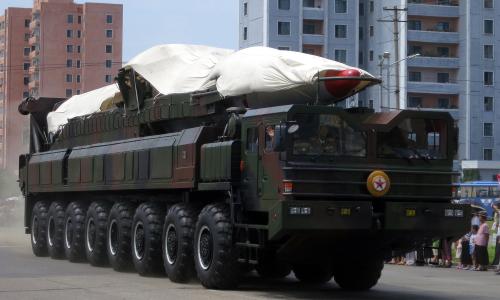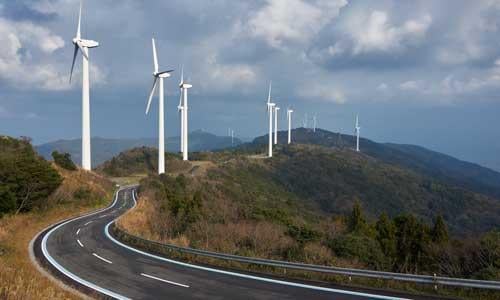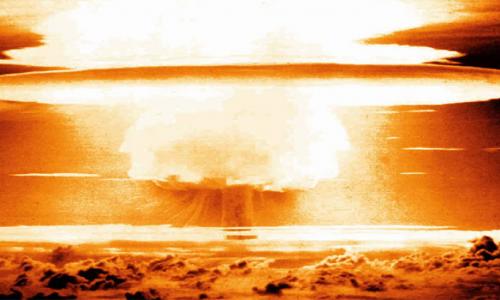Each year in the United States, nuclear power reactors produce about 2,000 tons of spent nuclear fuel rods. This highly radioactive waste, which will remain dangerous for hundreds of thousands of years, is currently stored at the reactor sites where it is generated. According to current law, spent nuclear fuel and other "high-level" radioactive wastes can be disposed of only in a deep geologic repository where they can be isolated from the environment. However, the U.S. government has developed only one site for such a repository, Yucca Mountain in Nevada, which has experienced significant technical difficulties and political opposition. The Obama administration has decided to stop development of Yucca Mountain, and reactor owners will likely continue to store spent fuel on site for several decades. Fortunately, there is no near-term need for a permanent repository, since spent fuel can be stored safely and securely in dry casks for at least 50 years. However, the long-term storage problem must eventually be resolved.
Yucca Mountain's cancellation has led to renewed interest in spent fuel reprocessing, which is a complex chemical process that dissolves spent nuclear fuel in acid and separates its various constituents: uranium, plutonium and highly radioactive isotopes known as "fission products."
Misleading claims by AREVA
The interest in reprocessing is partly based on false claims by the reprocessing industry that the technology simplifies the nuclear waste disposal problem by reducing the hazard and volume of waste. For instance, the French company AREVA, which reprocesses French spent nuclear fuel, claims that reprocessing "reduces the volume of waste by a factor of at least four."[i] This statement is contradicted by recent data from the U.S. Department of Energy (DOE), which show that repro¬cessing greatly increases the total volume of radioactive waste, compared to direct disposal of spent fuel.[ii]
The figure and table show the volume of different waste streams generated by three different reactor fuel cycles. In the "once-through" cycle, which reflects the current U.S. strategy, the spent fuel is stored and ultimately disposed of in a geologic repository. In the second fuel cycle, all spent fuel would be reprocessed and the plutonium extracted from reprocessing would be used as new fuel in advanced, yet-to-be-developed "fast burner" reactors. The third scenario is similar to the second, except that the recovered plutonium would be used in both fast reactors and current-generation "thermal" reactors. A geologic repository would still be required in scenarios 2 and 3, since reprocessing generates high-level radioactive waste.
In addition to high-level waste, reprocessing generates other types of radioactive waste that require secure disposal. These wastes are more dilute than high-level waste (and hence have greater volume). Although most of the waste falls into the low-level waste category, reprocessing increases the volume by a factor of six to seven relative to the once-through cycle. The United States has three NRC-licensed, commercially operated low-level waste disposal sites that currently accept waste. Reprocessing increases the volume of "greater-than-class-C" low-level waste by a factor of 160. DOE is responsible for disposing of this waste, which contains long-lived radioactive isotopes and cannot be placed in a regular low-level waste site, but as yet has no policy on how to do so.
Relative to the once-through cycle, reprocessing results in somewhat less high-level waste requiring disposal in a geologic repository (23-24 percent by volume). However, this benefit would be insignificant compared to the additional burden posed by the large volumes of low-level and greater-then-class-C wastes.
Total waste generated over 50 years (in cubic meters)
Includes wastes from decontamination and decommissioning of reactors (excluding left over spent fuel), but not of other facilities such as reprocessing plants.
|
High-level Waste |
Greater than Class C Low-level Waste |
Low-level Waste |
Cesium and Strontium |
|
|
Once-through fuel cycle |
70,990 |
2,500 |
367,500 |
0 |
|
Reprocessing with fast reactors |
55,000 |
416,500 |
2,677,500 |
5,655 |
|
Reprocessing with thermal and fast reactors |
54,000 |
400,500 |
2,449,500 |
5,655 |
The data reflect DOE's assumption that the radioactive isotopes cesium-137 and strontium-90 would also be separated during reprocessing, and stored above-ground in dry casks for 300 years, during which they would decay to very low concentrations. However, the safety of such above-ground storage containers cannot be guaranteed for 300 years because they would not maintain their structural integrity and would need to be replaced. Moreover, proposing a waste "solution" that poses a risk for the next dozen generations is irresponsible.
Additional reprocessing waste
The data above underestimate the waste produced by reprocessing, because DOE did not provide data on two additional reprocessing waste streams.
First, uranium would be separated during reprocessing and stored as an oxide powder in drums. The volume of the separated uranium would be comparable to that of the initial spent fuel.[iii] While in principle this material could be re-enriched for use as reactor fuel, it is contaminated with undesirable uranium and plutonium isotopes, making it far more expensive and inconvenient than using mined uranium. Thus, DOE would likely classify this material as "greater-than-class-C" low-level waste.
Second, the decontamination and decommissioning of reprocessing and fuel fabrication plants would generate additional waste. DOE asserts that it does not need to account for these wastes because they would be much smaller than those from the reactor fleet. However, this claim is not plausible and DOE should include this waste to provide an accurate comparison of the waste produced in the once-through and reprocessing scenarios.
The rest of the story
Finally, a system of fast reactors operating over a period of a century or longer would be needed to consume the plutonium and other actinides that are separated during reprocessing. Each reactor cycle consumes only a small fraction of these elements, so the spent fuel would have to be repeatedly reprocessed and reused over many years. If this system shuts down at some point, the remaining material would end up as waste and need to be disposed of in a repository.[iv]
The bottom line
Reprocessing of spent nuclear fuel would increase, not decrease, the total volume of nuclear waste. AREVA's claims to the contrary are inaccurate. Reprocessing is not a sensible answer to the nuclear waste problem.
- "Some Questions and Answers about Nuclear Fuel Recycling," Laurence Pernot, March 10, 2009
- Data from the Department of Energy Draft Global Nuclear Energy Partnership Programmatic Environmental Impact Statement, DOE/EIS-0396, October 2008, Tables 4.8-5 and 4.8-6, p. 4-138 and 4-139
- R.A. Wigeland, "Performance Summary of Advanced Fuel Cycles," GNEP-TIO-AI-AI-RT-2008-00268, U.S. Department of Energy, June 10, 2008, p. 36.
- Lisbeth Gronlund, David Lochbaum, and Edwin Lyman, Nuclear Power in a Warming World, December 2007 (Union of Concerned Scientists) pp. 71-74



